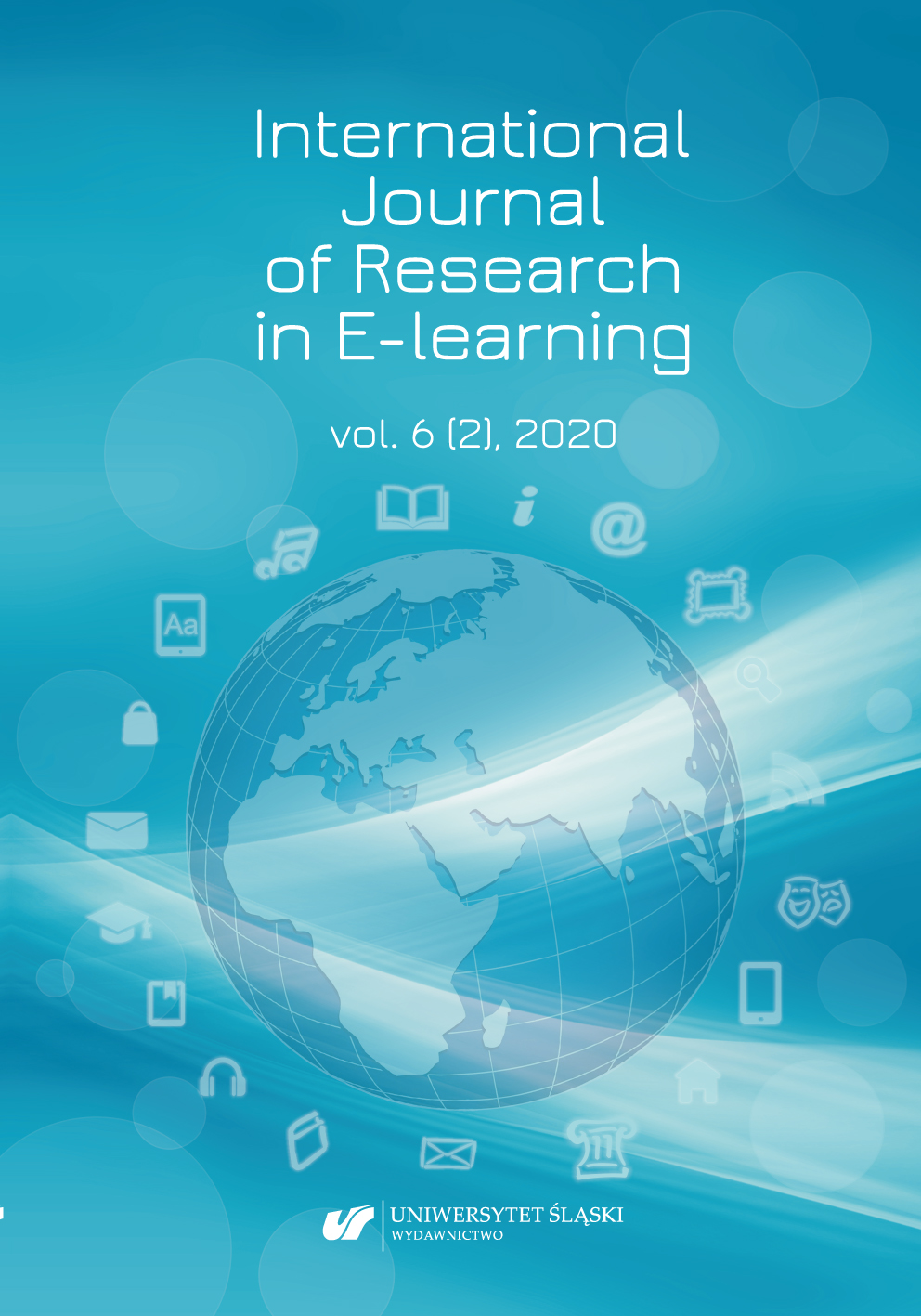Anderson, L. W. & Krathwohl, D. R. (Eds.). (2001). A taxonomy for learning, teaching, and assessing: A revision of Bloom’s taxonomy of educational objectives. Longman.
Google Scholar
Atkin, J. M., Black, P. & Coffey, J. (Eds.). (2005). Classroom assessment and the National Science Education Standards / Committee on Classroom Assessment and the National Science Education Standards. National Academy Press.
Google Scholar
Astin, A. W. (2012). Assessment for excellence: The philosophy and practice of assessment and evaluation in higher education. Rowman & Littlefield Publishers.
Google Scholar
Beall, G. (2016). 8 Key Differences between Gen Z and Millennials. Retrieved from https://www.huffingtonpost.com/george-beall/8-key-differences-between_b_12814200.html? guccounter=1
Google Scholar
Bishop, S. K., Dixon, M. R., Moore, J. W., & Lundy, M. P. (2016). Behavioral perspectives on personality. In V. Zeigler-Hill & T. K. Shackelford (Eds.), Encyclopedia of personality and individual differences (1–11). Springer International Publishing AG. https://doi 10.1007/978-3-319-28099-8_962-1
Google Scholar
Bloom, B., & Krathwohl, D. (1956). Taxonomy of educational objectives: the classification of educational goals, by a committee of college and university examiners. Handbooks 1 to 3: The cognitive, affective and psychomotor domain. Longmans Green.
Google Scholar
Bloom, B. (Ed.). (1956). Taxonomy of educational objectives, the classification of educational goals – Handbook I: Cognitive domain. McKay.
Google Scholar
Clark, D. R. (2004). Bloom’s taxonomy of learning domains. Retrieved from http://www.nwlink.com/~donclark/hrd/bloom.html
Google Scholar
Cowie, B. & Bell, B. (1999). A model of formative assessment in science education. Assessment in Education, 6, 101–116.
Google Scholar
Crooks, T. (2001). The validity of formative assessments. Paper presented to the British Educational Research Association Annual Conference, University of Leeds, 13–15 September. Retrieved from http://www.leeds.ac.uk/educol/documents/00001862.htm
Google Scholar
Dave, R. H. (1975). Psychomotor levels. In R. J. Armstrong (Ed.), Developing and writing behavioural objectives (pp. 33–34). Educational Innovators Press.
Google Scholar
Diogo dos Reis, A., Yakovleva, O., Smyrnova-Trybulska, E., & Morze, N. (2018). From Socratic behaviourism to digital constructivism. International Journal of Research in E-Learning, 4(1), 11–28. https://www.journals.us.edu.plcommunica/index.php/IJREL/article/view/8333
Google Scholar
Heriot-Watt University. (1999). Lola: Learning about open learning, training manual. Heriot-Watt University.
Google Scholar
Issa, T., Issa, Th., & Issa, T. B. (2016). Wiki tool in higher education: An Australian perspective. International Journal of Research in E-Learning, 2(1), 11–27. https://www.journals.us.edu.pl/index.php/IJREL/article/view/8373
Google Scholar
Jordan, A., Carlile, O., & Stack, A. (2008). Approaches to learning: a guide for teachers. Open University Press.
Google Scholar
Kemp, N. & Grieve, R. (2014). Face-to-face or face-to-screen? Undergraduates’ opinions and test performance in classroom vs. online learning. Frontiers in Psychology, 5(1278), 1–11. https://doi:10.3389/fpsyg.2014.01278
Google Scholar
Kołodziejczak, B., Mokwa-Tarnowska, I. & Roszak, M. (2017). Authenticity in developing English for specific purposes. Linguodidactica XXI, 147–163.
Google Scholar
Kołodziejczak, B., Roszak, M., Ren-Kurc, A., Kowalewski, W. & Półjanowicz, W. (2015). Communication tools on e-learning portals. In E. Smyrnova-Trybulska (Ed.), IT tools – good practice of effective use in education (pp. 63–80). Studio Noa.
Google Scholar
Krathwohl, D. R., Bloom, B. S. & Masia, B. B. (1964). Taxonomy of educational objectives, the classification of educational goals – Handbook II: Affective domain. McKay.
Google Scholar
Mathur, A. K. (2017). The role of soft skills in enhancing employability of technical graduated: A study. International Journal on Emerging Technologies, 8(1), 65–66.
Google Scholar
Mokwa-Tarnowska, I., Roszak, M. & Kołodziejczak, B. (2018). Online collaborative projects to enhance soft skills. In E. Smyrnova-Trybulska (Ed.) E-learning and Smart Learning Environment for the Preparation of New Generation Specialists. E-learning Series, vol. 10 (pp. 43–464). Studio Noa.
Google Scholar
Mokwa-Tarnowska, I. (2017a). E-learning i blended learning w nauczaniu akademickim: zagadnienia metodyczne. Wydawnictwo Politechniki Gdańskiej.
Google Scholar
Mokwa-Tarnowska, I. (2017b). Higher interest, deeper concentration, more satisfaction – Web 2.0 tools to enhance technical English classes. In M. Sowa, J. Krajka (Eds.), Innovations in languages for specific purposes, Innovations en langues sur objectifs spécifiques: Present challenges and future promises, défies actuels et engagements à venir (pp. 156–167). Peter Lang.
Google Scholar
Mokwa-Tarnowska, I. (2017c). Web-enhanced project environment. Writing specifications and creating interactive poster presentations. In M. Hrubý (Ed.), Distance learning, simulation and communication 2017, proceedings (selected papers), Brno, May 31–June 2 (pp. 113‒120). University of Defence.
Google Scholar
NACE (2019), The four career competencies employers value most. https://www.naceweb.org/careerreadiness/competencies/the-four-career-competencies-employers-value-most/
Google Scholar
Noskova, T., Pavlova, T., Yakovleva, O., Gutiérrez-Esteban, P., Martin-Espada, R., Cubo-Delgado, S., Arias-Masa, J., Delicado-Puerto, G., Alonso-Dias, L. & Yuste-Tosina, R. (2017). Some trends of ICT tools application by teachers: A comparative study of Russian and Spanish experience. In E. Smyrnova-Trybulska (Ed.), E-learning vol. 9: Effective development of teachers’ skills in the area of ICT and e-learning (pp. 229–238). Studio Noa.
Google Scholar
Rima, H. B., Syeda, T. U. & Lubna, J. R. (2017). The big impact of soft skills in today’s workplace. International Journal of Economics, Commerce and Management, 5(1), 456–463.
Google Scholar
Scott, D. (Ed.). (2003). Curriculum studies: Vol. IV Boundaries: subjects, assessment, and evaluation. Routledge Falmer. http://books.google.com/books?id=llc8VhacrD8C&pg=PA203&dq=summative+assessment&cd=3#v=onepage&q=summative%20assessment&f=false
Google Scholar
Skinner, B. F. (1938). The behaviour of organisms. Appleton-Century-Crofts.
Google Scholar
Thorndike, E. L. (1911). Animal intelligence. Macmillan.
Google Scholar
Widła, H. (2019). Implementation of IT tools as a method of improving language and communication skills of bi- and trilingual students. International Journal of Research in E-Learning, 5(2), 33–48. https://www.journals.us.edu.pl/index.php/IJREL/article/view/8429
Google Scholar
Woo, Y., Mehringer, S., Agostinho S. & Reeves, Th. (2007). Implementing authentic tasks in webbased learning environments. EDUCAUSE Review,3(2007), 36–43 https://er.educause.edu/~/media/files/article-downloads/eqm0735.pdf
Google Scholar


 https://doi.org/10.31261/IJREL.2020.6.2.05
https://doi.org/10.31261/IJREL.2020.6.2.05
